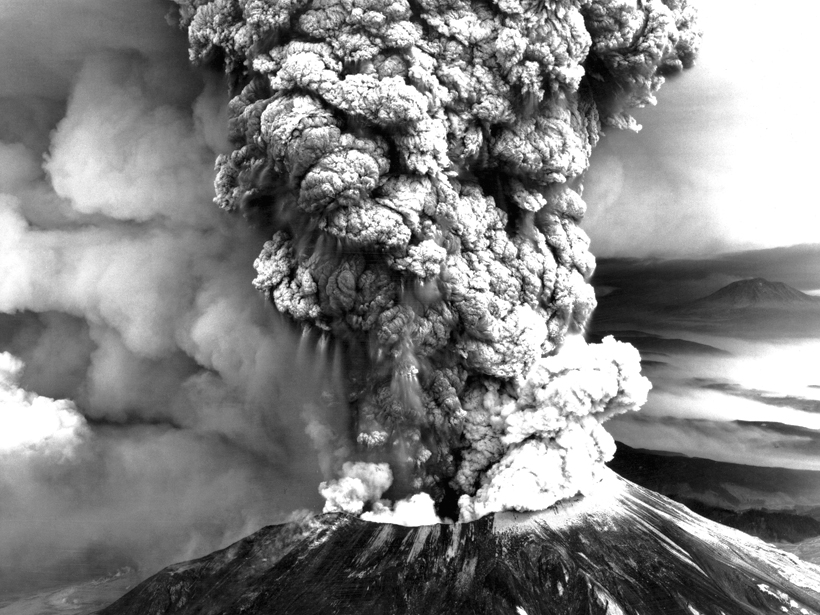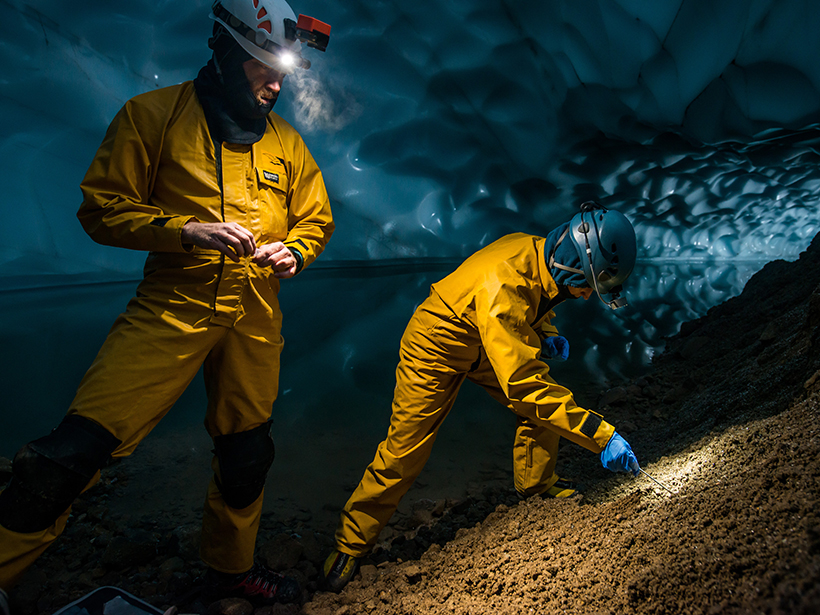Forty years after the explosive eruption of Mount St. Helens, scientists, communities, and civic officials are evaluating plans to best protect public health before, during, and after an eruption.
Mount Rainier
Posted inFeatures
Climbing the Occasionally Cataclysmic Cascades
Living in Geologic Time: Every one of the Pacific Northwest’s volatile volcanoes is likely to erupt again before the range goes extinct.
Posted inNews
Ice Caves atop a Volcano Give Taste of Otherworldly Science
Researchers brave perils and tumbling trash to probe glacial caves on Mount Rainier, improving their understanding of its extraordinary environment and helping to advance space exploration.



